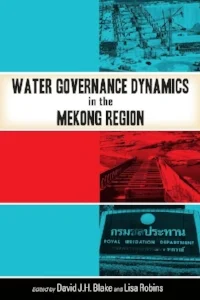BOOK CHAPTER: Social Movement Resistance to Accumulation by Dispossession in Myanmar: A Case Study of the Ka Lone Htar Dam near the Dawei Special Economic Zone
/Publication date:
November 2016
Publication:
Water Governance Dynamics in the Mekong Region
Authors:
Carl Middleton (Deputy Director, CSDS) and Zaw Aung (Independent Researcher)
Editors:
David J.H. Blake and Lisa Robins
Download the chapter here.
Abstract:
In late 2010, shortly before Myanmar’s stumbling transition towards democracy, the military junta government at-the-time signed a contract with Thailand’s Italian-Thai Development Public Co. Ltd. (ITD) to build the Dawei Deep Seaport and Special Economic Zone (‘Dawei SEZ’). To be located on the Andaman coast in Tanintharyi Region of Southern Myanmar, and to be connected to Thailand via an eight lane “roadlink”, the project would cover 250 square kilometers and host various heavy, medium and light industries. As the environmental and social implications of a project of such scale became apparent, however, to-be-affected communities and civil society groups organized to challenge it. In November 2013, as ITD struggled to attract additional international investors for a variety of reasons, including this resistance, but also perceived uncertainties in Myanmar’s own political commitment to the project, the Myanmar government ended the company’s contract. The Dawei SEZ was simultaneously transformed into a Government-to-Government project between Myanmar and Thailand, and is currently under construction in a significantly scaled-back form.
The focus of this chapter is a water storage dam proposed at Ka Lone Htar village, located outside of the Dawei SEZ itself, intended to supply freshwater to the SEZ’s industries. If built, the dam would fully submerge the village consisting of 182 households, along with several thousand acres of plantations and natural forest. In response to the threat of dispossession and relocation, the Ka Lone Htar community members successfully mobilized and resisted the dam. Conceptually, this chapter draws on Levien’s (2012) reworked concept of Harvey’s (2003) Accumulation by Dispossession (ABD), together with social movement theory, in particular on resource mobilization and political opportunity. Overall, this chapter maps out a brief history and overview of the livelihoods of Ka Lone Htar village; the political-economic conditions under which plans for the dam emerged, and the rationale and strategies of the state-private sector alliance that sought to build it; and summarizes the motivations and strategies of the Ka Lone Htar community and a wider civil society network in Myanmar and Thailand that mobilized against the dam and the Dawei SEZ.
We found that it was not possible for ITD to persuade the Ka Lone Htar community members to relocate through a voluntary compensation arrangement, because the majority of the Ka Lone Htar community hold a strong affinity for the village, forged by the past adversity that they have faced in building their lives there. As the community members consider that they have received little past support from the government, backed by strong leadership in the form of a local monk, they are independent-minded and optimistic about their future prospects in the current location. Thus, we argue that this necessitated the state’s attempt to utilize ”extra-economic” means to relocate the village, including via coercive meetings, a divide-and-rule strategy amongst the community members, and general intimidation. In Myanmar, under the past military government, it had been relatively routine to forcibly relocate villages for development projects. In this case, however, the Ka Lone Htar community was able to resist attempts to pressure them into resettlement. They utilized a range of strategies, including at first proposing alternative dam sites, to later outright opposing the project in the media and raising a complaint with the Thai National Human Rights Commission. Throughout, they built networks with other communities affected by the SEZ, as well with civil society groups in nearby Dawei town, nationally, and in Thailand, and acted within a growing public sphere in Myanmar. Also important to the dam’s cancellation, however, was that the state-private sector alliance weakened as the government’s confidence in ITD waned, and therefore so too did the state’s incentive to deploy further extra-economic pressure. Conceptually, the chapter finds utility in Levien’s (2012) reworked theory of ABD, because it allows our analysis to account for the specificity of Ka Lone Htar village, including: its history and its relationship to the market (drawing also on Hall, 2012); the contemporary political dynamics between the community, the government and the Dawei SEZ developers; and the mosaicked forms of property ownership within the village, namely rivers and forest as common pool resources, and plantation land as private property (again drawing on Hall, 2012).


